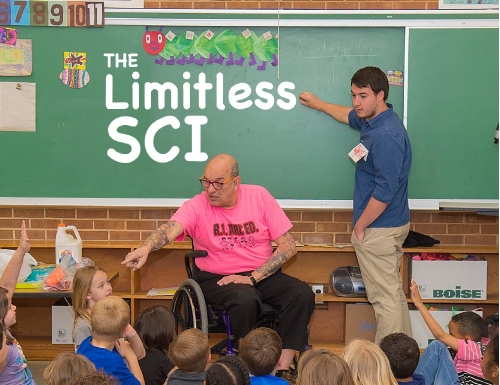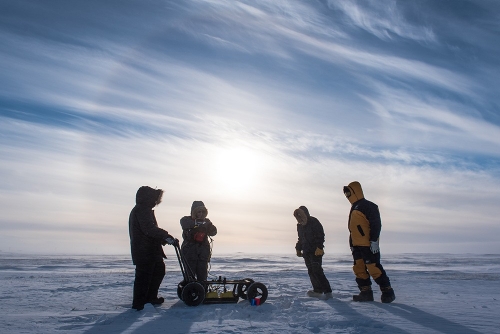The Experience
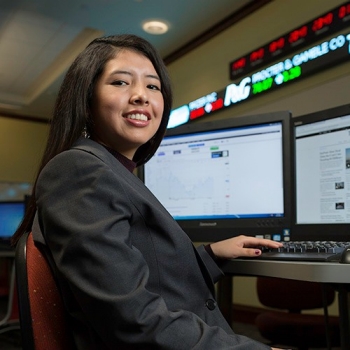
Ambassador of Change
A recent alumna capitalizes on her economics education to pursue international aspirations.
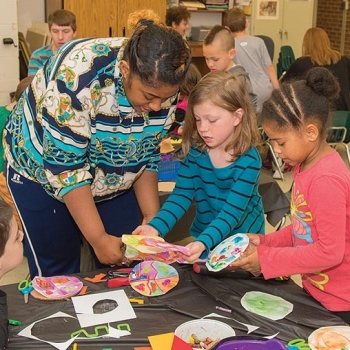
The Limitless SCI
The Scholar-Citizen Initiative provides students with a framework for facilitating cross-curricular learning.

Healthy Outreach
Jyotsna Sharman and her nutrition students spread dietary knowledge throughout local communities.

Science behind Caring
Uncoventional undergraduate research prepares Radford nursing students.
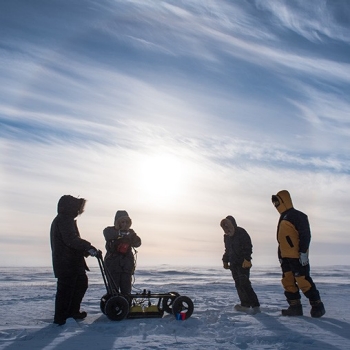
Mission: Undergraduate Research 

Students earned valuable field research experience over the 2016 spring break.
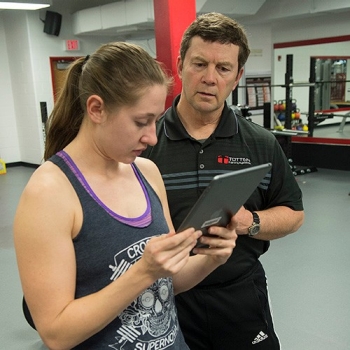
Muscling through Spring Break
The Olympic lifting certification class provides hands-on training to students striving to be better lifters and teachers of the sport.
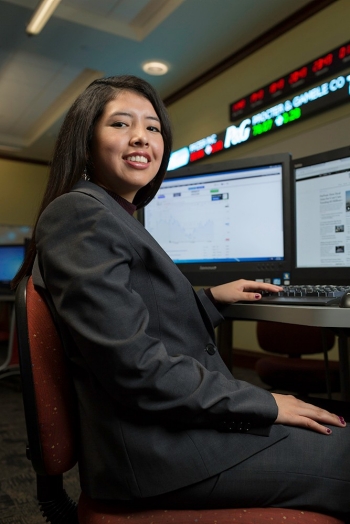
Since arriving in the United States at age 13 from Bolivia, Giancarla Rojas-Mendoza ’16 has envisioned herself earning a college education and someday returning to her home country to play a role in its economic stabilization.
It’s one reason the graduate chose to study at Radford University’s College of Business and Economics. “My parents moved to the United States to seek better job opportunities and escape the political and economic instability,” Rojas-Mendoza said. “I always wondered how I can help.”
Her parents, Rodrigo and Judith, came to the United States in the early 2000s to pursue the American dream. She and her sister, Milenia, followed their parents a few years later. Living in Northern Virginia, Rojas-Mendoza attended community college after high school. She engaged herself in her community’s civic issues, which provided her with a starting point to influence local politics. There, she gained a valuable mentorship with a Radford University alumna, Emma Violand-Sanchez.
Violand-Sanchez, who immigrated to the United States from Bolivia, made her start at Radford University, and it laid the groundwork for her professional career.
Rojas-Mendoza’s mentor helped her through the application process and she received a scholarship from the Radford University Foundation, sponsored by an alumna from the Northern Virginia area. “Radford gave me a scholarship, and I was exposed to opportunities that I would have never been exposed to in Bolivia,” she said.
At Radford, Rojas-Mendoza continued to be mindful of the economic situation in Bolivia, and she wanted to learn more about how she may someday help ease those problems and how she could become a contributing member in her new home in the United States.
“I took economics classes at Radford University and it explained and answered a lot of my questions,” Rojas-Mendoza said. “It made me think about how countries create economic solutions. This influenced my desire to study international economics, concentrating on trade and development.”
As her knowledge of economics and international trade expanded, so did her confidence. Becoming involved on campus and joining the Student Managed Investment Portfolio Organization — SMIPO for short — boosted her belief in herself. “SMIPO is one organization that helped me develop professionally,” Rojas-Mendoza said. “I learned how to manage a stock portfolio, and I met professionals in my field.”
One-on-one talks with her professors helped, too. She interviewed each of them, asking what possibilities would lie ahead once she was equipped with a bachelor’s degree in economics from Radford University.
“She has a lot of civic responsibilities. She wants to make the world a better place for everyone,” said Department of Economics faculty member Kiertisak Toh. “She has a drive to do something good for others.”
For her final semester, Rojas-Mendoza interned at the Washington International Trade Association in Washington, D.C. While there, she met an ambassador from Honduras who, after discussing economic matters in Bolivia and the fact that Bolivia has no ambassador to the United States, encouraged Rojas-Mendoza to become an ambassador.
“I was like, ‘Me, an ambassador?’” she recalled with excitement. “I had never really thought about it until she brought it up. Now, I want to learn more about economics and get more experience and someday help my country.”
Before she graduated from Radford University in May 2016, Rojas-Mendoza was looking forward to realizing her dream of earning a degree. She also had plans to attend graduate school. However, much of her focus was on her parents and how much they had sacrificed.
“They are very, very happy and very proud. I feel like a lot of times they have put aside their American dream so they could help my sister and me,” said Rojas-Mendoza, who became the first in her family to graduate from college. “For me, graduating from Radford University was a way to pay them back for all their hard work and sacrifice. I want them to believe that it was all worth it.”


| The Limitless SCI Facilitating cross-curricular learning. |
| Healthy Outreach Spreading dietary knowledge throughout communities. |
| Science behind Caring Unconventional undergraduate research. |
| Mission: Undergraduate Research Students earned valuable field research experience. |
| Muscling through Spring Break The Olympic lifting certification class provides hands-on training. |
| Music in Nepal Spreading the importance of music education abroad. |

At Radford University, public service is paramount. But, then again, so is academic inquiry. So, which comes first: civic engagement or academic/theoretical learning?
The answer for the Scholar-Citizen Initiative, one of five premier High Impact Practices programs that the University offers — and one that has grown 1,000 percent since its implementation in fall 2012 — lies in its name.
First called “Citizen-Scholar,” the program was soon renamed the “Scholar-Citizen Initiative” — or SCI — to better align its focus with the university’s emphasis on academic scholarship and student research. Not to mention, the new acronym — pronounced like the blue and sometimes cloudy thing above us — sounded more like something the students might be inclined to “reach” for.
According to program director Erin Webster Garrett, who is also a professor in the Department of English, “About halfway through the process of developing the implementation plan for SCI, we realized that, for us, what was really important was that intellectual knowledge be at the front end — because to be a good citizen, you have to be a good critical thinker.”
Naturally, then, reflection is a vital component of the learning process in SCI, and the program, Webster-Garrett says, provides students with a framework in which to make connections and integrate knowledge they’ve gained across a variety of disciplines.
Taylor Brock ’16, who will graduate with distinction as a Scholar-Citizen Fellow in December, is one of the many students who can attest to the program’s strong framework for facilitating cross-curricular learning.
“Being involved in the SCI program … has helped me make connections between what I am learning in one class to what I am learning in others, and between what I’m doing as a student to the experiences I have in other parts of my life,” she said.
“In my SCI-designated Peace Studies class, we discussed colonization and the conditioning that takes place in a society in order to take over an already-established society… In my British Literary History class, we read Orwell’s ‘Shooting an Elephant,’ an essay about British colonization. My peace studies introduction to the issues deepened my understanding of the literature and thus my engagement with the texts in my Brit Lit class. And my Scholar-Citizen ePortfolio is helping me see how these two classes relate to one another.”
This is a vital part of high-impact learning, Webster- Garrett says, and its effectiveness is on full display in Professor Richard Bay’s art education classes, which have been a part of SCI since its inception.
This past spring, Bay’s art education students made weekly visits to McHarg Elementary School to work with youngsters who range from preschool to second grade. In addition to fostering self-esteem, social skills, problem-solving and collaboration abilities, the art education students’ teaching plans were strategically engineered to develop the youngsters’ gross and fine motor skills — but only after rigorous pedagogical and theoretical training in the classrooms of Radford University.
Bay says his SCI-designated art education program, much like SCI itself, has grown significantly from year to year, and it’s not difficult to understand why.
“Learning is about enjoyment, noise, conversation, interaction!” he said — and, incidentally, community involvement is a vital part of SCI.
According to Michael Brown, principal of McHarg Elementary School, part of the success of Bay’s SCI-designated art education program is attributable to the diversity of personalities — and teaching methods — the student teachers bring to the art table.
“The youngsters aren’t just working with one teacher; they’re working with multiple teachers — future teachers,” he said, acknowledging that just as no two students learn the same, no two teachers teach the same.
In addition to filling a critical need as an extracurricular at the school, Bay and his student teachers also play a part in beautifying the school’s corridors alongside the McHarg Elementary youngsters.
Walking down the main hallway, past the handcrafted construction-paper flowers hanging in the brightly-painted cardboard window boxes (also handcrafted), one can’t help noticing how well-positioned the flowers are to get sun — and — of course — SCI.


| Ambassador of Change A recent alumna pursues international aspirations. |
| Healthy Outreach Spreading dietary knowledge throughout communities. |
| Science behind Caring Unconventional undergraduate research. |
| Mission: Undergraduate Research Students earned valuable field research experience. |
| Muscling through Spring Break The Olympic lifting certification class provides hands-on training. |
| Music in Nepal Spreading the importance of music education abroad. |

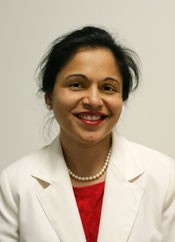
Choosing foods to eat for a healthy lifestyle can be a daunting task.
There can be so many questions.
Which organic fruits and vegetables are best? What does all the information on nutrition labels mean? Which healthy foods are the yummiest? Do I have to eat so many green veggies?
Proper nutrition takes work and knowledge.
Jyotsna Sharman’s nutrition students eagerly embrace the role of providing answers and educating community and school groups about how to make choices concerning their health.
“If you have some knowledge, it’s no good keeping it to yourself. It’s good to share and let people who don’t have the knowledge benefit from it,” said Sharman, an associate professor and director of the Nutrition and Dietetics program at Radford University.
Sharman challenges students enrolled in her Community and Cultural Nutrition course to plan and publicly present lessons targeting the specific needs of various communities. It’s a process that has many benefits for her students, many of whom plan to become registered dieticians or work in the public health sector.
“On a personal level, the service-learning experience gives them an opportunity to apply their classroom learning in a community setting, helps them build communication skills as well as confidence in their abilities, and also boosts their application for dietetic internships,” said Sharman, a registered dietitian.
As for the professional level, Sharman said her “students” learn how to assess the specific needs of the local and regional communities, and then meet the identified needs by offering nutritional advice consistent with the Dietary Guidelines for Americans. Such an education helps individuals make healthy food choices, adopt healthy nutrition-related practices, change their eating behavior and thus enhance their nutritional well-being.”
When students venture out into the community, they often discuss ways to prevent chronic conditions such as hypertension, heart disease, diabetes and obesity.
Debra Super was in Sharman’s class in fall 2015 and gave a presentation at the Community Health Center of the New River Valley in Christiansburg about the DASH Diet, which can be helpful for weight loss and controlling blood pressure and cholesterol.
“There are so many issues now, not just in the United States, but in the western world. We have chronic diseases we are bringing on ourselves,” said Super, who is retired from the Air Force.
“People are used to fast foods these days. They’re used to going to restaurants. The portions are getting bigger. We have a lot of sick people, and they don’t know why they’re sick. That’s really what draws me and makes me want to help people.”
Last fall, Bert Herald shared information about the barriers to losing weight and the significance of online and community support for weight loss with his audience at the health center. Herald talked about trigger foods, those foods that can cause people to overeat, and about tracking software such as MyFitnessPal, designed for smartphones.
The presentations were perfect practice to prepare him for an internship after graduation, said Herald, a former electrical engineer from Tempe, Arizona, who is embarking on a second career as a registered dietitian.
“Delivering this content helped me refine my techniques and made me feel more comfortable in front of different types of audiences,” Herald said.
Campbell Carter’s presentation offered facts and tips about foods that are good for the ticker. “This included heart health promoting foods that should be eaten often to help prevent atherosclerotic effects in the arteries,” Campbell said.
Carter provided handouts full of information and guidance about nutrient values.
“The audiences love handouts; they find them very beneficial,” said Sharman, who has her students ask for feedback regarding the presentations. In the spring, some respondents said they would like more coupons and more free food samples. They also enjoyed the free body mass index test and hand-grip strength test, Sharman said.
Megan Osborne reached out to a different demographic for her presentations and engaged her group well beyond the required 30 minutes. The then-senior from Luray gave two 90-minute talks to students at her alma mater, Luray High School.
“The main purpose of my presentations was to explain the benefits of vegetables,” Osborne said. “I tried to present on vegetables that I knew people aren’t as familiar with in hopes that they may try something new.”
She created a PowerPoint presentation to help her explain the numerous types of vegetables, taught a lesson through a Bingo-style game and made healthy fruit and vegetable smoothies for the school children.
“I really enjoy interacting with people and explaining to them how nutrition is fun,” Osborne said. “Teaching people that eating well doesn’t have to be boring, nasty or expensive is very rewarding.”
Osborne said she chose to give her presentation at her former high school “because it’s in a rural area which tends to have a higher prevalence of nutrition-related diseases. I feel if I can reach out to one person at a time, eventually I’ll make a bigger difference.”
Osborne has a passion for providing proper nutrition information to children. Her future plans include working in a neonatal intensive care unit administering nutrition support to premature infants.
While the project provides numerous benefits to Sharman’s students, it also is a terrific service to communities, too, she said.
“It’s a win-win situation,” Sharman said. “I want people to recognize that Radford University is interested in bettering the local community. It makes me happy that people think nicely about Radford University when we volunteer our time and effort.”


| Ambassador of Change A recent alumna pursues international aspirations. |
| The Limitless SCI Facilitating cross-curricular learning. |
| Science behind Caring Unconventional undergraduate research. |
| Mission: Undergraduate Research Students earned valuable field research experience. |
| Muscling through Spring Break The Olympic lifting certification class provides hands-on training. |
| Music in Nepal Spreading the importance of music education abroad. |

To launch their nursing studies, Mandeep Kaur and Caitlin Linville set out to build a solid scientific foundation.
As sophomores, an exercise in Associate Professor of Biology Jason Davis’ physiology and anatomy class for nurses required students to prepare a grant proposal for a project. Kaur and Linville, as is their wont, went further. After working in support of other lab projects, the twosome designed and executed their proposed project, thus launching careers as scientists before their nursing studies had begun.
Their undergraduate research in the lab involved a range of experiences — from building treadmills for hissing cockroaches to testing the health benefit of an oriental folk medicine on houseflies to traveling to Portland, Oregon, and Palm Beach, Florida, for presentations. In the process, they developed as scientists and learned the art and science of nursing — not to mention gaining hard-earned time and stress management experience.
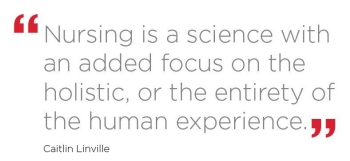
“I feel like nursing is a quiet science. Nursing is not one of those things people think of when you say ‘science.’ They think of biology, chemistry, physics and disciplines like that. Nursing is a science with an added focus on the holistic, or the entirety of the human experience,” said Linville, the daughter of Raymond Linville, former dean of the Waldron College of Health and Human Services, chair of the communication sciences and disorders department, and a founding faculty member of the Doctor of Physical Therapy program.
Kaur considers her two years as a biological researcher a key investment in career success as a health care provider.
“We mostly got into it to strengthen our scientific research base,” said Kaur. “I wanted to look into research protocols and to analyze and apply them to what I am doing,” Kaur said. “I wanted to get comfortable with evidence-based practice. These are opportunities peripheral to daily nursing work that I know will be valuable.”
Kaur, a double major in nursing and Spanish, also considered the research opportunity a way to engage her curiosity and diverse interests.
“I just wanted to do what I found interesting. I like biology, I like Spanish and my goal is to be a nurse,” she said. “I like pushing myself to see what I can do and what I can achieve. Radford was a place to do them all.”
Kaur and Linville wrapped up the nursing student stages of their careers with practicums that entail 168 hours of 12-hour-a-day shifts at Roanoke Memorial Hospital — Kaur on the progressive care unit and Linville on the med/surg unit.
Both will also complete independent study projects — Kaur in Spanish, Linville in biology — to wind up their undergraduate careers at Radford.
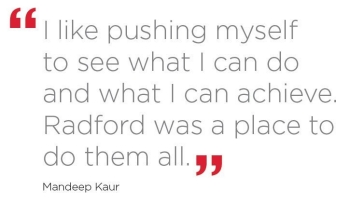
To say they are motivated is an understatement. They both knew the reputation of Radford’s nursing program and saw the research opportunity as a way to prepare for the rigors of the highly regarded program. The two-year research project into the effects of a Vespa Amino Acids Mixture (VAAM) on houseflies’ cellular health proved to be a rewarding and challenging way to ramp up.
“I know now that the work day doesn’t end until I go to sleep. The effort prepared me more to be productive, to get things done in a timely fashion and still account for things that might change,” said Linville, who worked parttime while going to school and doing the original research project — which, among other unique aspects, involved swimming houseflies, as it is hard to recapture an airborne housefly for post-exercise study.
The pair has presented professionally at two national Society for Integrative Biology meetings and at Radford University’s annual research symposium. They are also preparing a paper on their examination of the claims about how VAAM, the key ingredient in a Japanese alternative health drink, boosts energy. The project’s findings indicate a potentially severe trade-off. Kaur and Linville’s thesis is that VAAM does boost energy in houseflies, but it also appears to damage mitochondria, the source of cellular energy.
Both Kaur and Linville treasure their Radford experiences.
“I definitely found great mentors who helped me grow as an individual — in biology, nursing and foreign language,” Kaur said. “Plus, I have made great friends in all three areas.”
Both were recipients of Summer Undergraduate Research Fellowships from the Office of Undergraduate Research to support their project. Their faculty advisor was Davis.
The pair has had a unique view of the transition through which the sciences are going at Radford University. Their original lab was a closet-sized space in Reed-Curie. They are now in the process of passing the project off to successors who will work in the new Center for the Sciences.
“The new lab has so much bench space and upgraded equipment,” Linville said. “But we spent so much time in our Curie lab, we are attached to it.”
Linville, to whom Radford was obviously no stranger, described Radford University’s core strength.
“There is more here than meets the eye. Radford helps students succeed, whether you want to be a nurse, a scientist or whatever.”


| Ambassador of Change A recent alumna pursues international aspirations. |
| The Limitless SCI Facilitating cross-curricular learning. |
| Healthy Outreach Spreading dietary knowledge throughout communities. |
| Mission: Undergraduate Research Students earned valuable field research experience. |
| Muscling through Spring Break The Olympic lifting certification class provides hands-on training. |
| Music in Nepal Spreading the importance of music education abroad. |

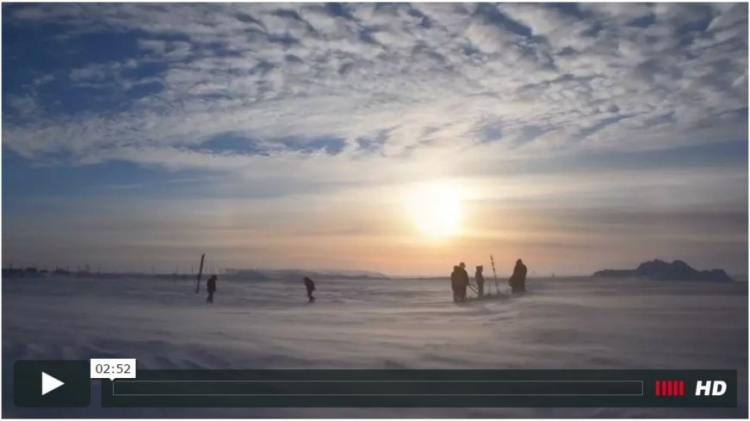
After a voyage of more than 3,500 miles, Radford University students and their professor, visited Alaska braving chilling temperatures and shivery arctic winds, all in the name of research. The team was there to study Arctic sea ice first-hand, living and working in a remote location with no connecting roads and an average temperate of -6 degrees Fahrenheit. Beyond the scientific research, the trip also exposes students to Inupiat and Alaskan culture.
To strengthen resumés and broaden horizons, Radford University students earned valuable field research experience over the 2016 spring break.
In arctic conditions, nine Radford University students, led by Professor of Physics Rhett Herman, studied polar ice cap properties. In tropical conditions, 16 students, led by Professor of Biology Jeremy Wojdak, teamed up on five projects to acquire critical field experience.
“We are young scientists. There are so many questions yet to be answered, and we are part of a new generation that has to get the answers,” said Katie Mankowski, a freshman biology and mathematics major from Fairfax.
Mankowski was part of the sixth Radford University team in the last 12 years to investigate the thermal balance and properties of the Arctic sea ice while developing a methodology to study its critical thickness. They were based at the National Science Foundation’s Naval Arctic Research Laboratory in Barrow, Alaska. Members of the team will present their work at the fall meeting of the American Geophysical Union, the world’s largest meeting of earth and space scientists, in San Francisco. While Mankowski and the Barrow team layered on clothing and consumed almost 5000 calories a day to protect themselves from the arctic elements and wind chill, Monika Mattson, an environmental sciences major from Floyd, and her teammates lathered on layers of sunscreen and consumed gallons of water against the tropical sun, the humidity and the salt water at their research site at the Virgin Islands Environmental Resource Station near Cruz Bay on St. John Island in the U.S Virgin Islands.
“The experience inspired me to explore more — more environments and more ecosystems. There are so many and they are so diverse in every sense,” said Mattson, who learned to snorkel as part of her team’s project to make a comparison of species richness and composition among fish at different marine substrates along the coast.
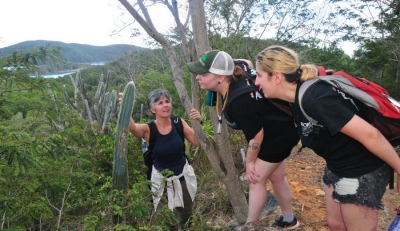
The Virgin Island team joined their Alaska colleagues as presenters at Radford University’s 26th Annual Student Engagement Forum, a festival of research that caps the school year.
“This kind of field experience asks students to practice being scientists,” said Wojdak. “They can identify gaps in both their own knowledge and our general scientific understanding, then start working at filling in those gaps.”
For Abdullah Zulfiqar, a junior geology and physics major from Reston, the Barrow trip was a valued first field experience.
“I was tested in many ways. Science in the field is different every day,” Zulfiqar said. “It pushed my endurance to keep aware of the many situations and keep chugging toward our goal. Every part was an ‘ah-ha’ moment.”
Logan Fisher, a physics major from Centerville, saw three auroras during his weeklong stay in Alaska, including an “insanely rare” purple display. He helped fix the sleds, gathered data and arranged the dipole trials for the OhmMapper resistivity apparatus while dressed in thermal underwear, thick socks, a turtleneck, Russian waders or snow pants, a parka, arctic boots, face mask, goggles, earmuffs, a wool hat, gloves, hand warmers and glove liners.
“I want to get into a science field, so it is important for me to get research experience,” said Fisher. “This opportunity was a big part of why I chose Radford University. There is an impressive selection of undergraduate research opportunities. I need that grounding.”
Fisher and Mankowski are both products of the Accelerated Research Opportunities (ARO) program, an initiative of the Office of Undergraduate Research and Scholarship (OURS) geared toward helping incoming students make connections with faculty, conduct original research and challenge themselves.
“Undergraduate research and scholarship is strongly associated with students earning higher grades, finishing their degree, going to graduate school and having better retention and application of information,” said OURS director Joe Wirgau.
According to Wirgau, ARO students can potentially have more than three years of research experience upon graduation, potentially resulting in publications, presentations and recognition. Among the components of the ARO are common housing; OURS 100, a course designed to prepare freshmen to participate in research projects; and a seminar series on active research in which students can participate.
“As a teacher, the most gratifying aspect of our trip is to see students struggle to design meaningful research projects, wrestle with the inevitable difficulties of field research in a remote location and then persevere to produce some new, valuable piece of knowledge … all in the course of three or four days,” said Wojdak.
Kayla McNeilly, a senior from Chester, capped off her preparation for graduate school in marine biology with the Virgin Islands research opportunity under Wojdak’s guidance.
“All ecosystems are different — with different plants, animals, insects,” McNeilly said. “As a biologist, I want to see, explore and learn as many as I can.”
During her time at Radford University, McNeilly worked with Assistant Professor of Biology Matt Close on a herpetological survey of Selu Conservancy for two years and branched off on her own project — assessing the size of mice upon which Selu snakes feed. Last summer, she landed a four-month internship at the Dolphin Research Center in Grassy Key, Florida.
“At Radford, many [of my] classes have included a research aspect. It is a big deal,” said McNeilly. “It has been similar to what I expect to find in the real world. We have been encouraged to ask our own questions, use our own ideas to find answers and … gather data. I have been taught by Ph.D. faculty, not graduate students, and the faculty have given me so much support and encouragement.”
To round out her college experience, she minored in dance and served as an admissions tour guide, introducing prospective students to the Radford University experience.
“I put in the extra effort and time because I want to get the most out of my undergraduate experience,” she said confidently. “I think I will get where I want to go.”


| Ambassador of Change A recent alumna pursues international aspirations. |
| The Limitless SCI Facilitating cross-curricular learning. |
| Healthy Outreach Spreading dietary knowledge throughout communities. |
| Science behind Caring Unconventional undergraduate research. |
| Muscling through Spring Break The Olympic lifting certification class provides hands-on training. |
| Music in Nepal Spreading the importance of music education abroad. |

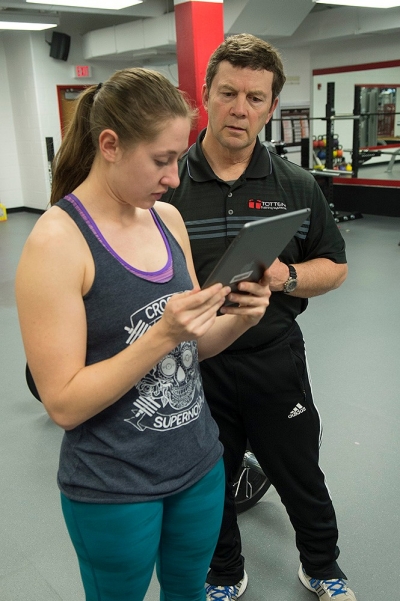
Amanda Cherry lives an intensely active lifestyle.
In addition to her studies at Radford University, the Poquoson native teaches CrossFit and is part of the university’s ROTC program. Upon graduating with a degree in strength, fitness and conditioning, Cherry wants to train soldiers once she’s commissioned into the Army.
Participating in Leo Totten’s three-day Olympic lifting certification class at Radford University in the spring helped. Totten, a former weightlifter who has been coaching the sport for more than 20 years, brought his course to Radford University to provide hands-on training to students striving to be better lifters and teachers of the sport.
“I feel like this class will help me be a better trainer for other athletes, and it is helping me learn more about training myself,” Cherry said on the course’s last day. “I’ve learned a lot about myself as an athlete.”
Cody Kelly participated in the class, too. He wants to be a powerlifter. He’s not yet ready for competitions on the big stage, but he’s working on it. He, too, found benefits from participating in Totten’s class.
“It’s been a great class,” Kelly said. “He takes a good amount of time with each individual person. He started us off with a generalization of a form we all should know, and then he slowly tweaked our technique individually, which is nice. It’s a small class, and that works to our advantage.”
Kelly and Cherry were among the seven Radford University strength, fitness and conditioning majors to participate in some heavy lifting in Totten’s dual certification course during spring break. Those who completed the course were awarded with basic and advanced Olympic lifting certifications.
“Getting two certifications is valuable,” said Kelly, a junior from Fredericksburg.
Totten developed the 16-hour certification program based on his experiences as a lifter and Olympic weightlifting coach. It is about 90 percent hands-on training and 10 percent classroom discussion, he said.
Totten also uses video technology to record and analyze sessions with his students.
The course offers technique training for snatch, clean and jerk lifting; explores basic biomechanics and flexibility issues; and provides safety recommendations.
“I teach the most effective and safest ways to lift,” Totten said. He also talks with his students about strategies for designing their own training courses.
Alex Robbins is working toward a career in which he can provide strength and conditioning training to collegiate, and maybe, professional athletes. “I’m taking this class because I think it will be to my advantage later on to have this knowledge in my tool belt,” said the sophomore from Richmond.
Giving students fresh ideas and perspectives about proper techniques is one of the many reasons health and human performance Associate Professor David Sallee invited Totten to Radford University.
“Students are trying to work as professional strength and conditioning coaches, so the key piece here is that they have hands-on experience that will allow them to work with athletes,” Sallee said. “We wanted to bring Leo to campus and bring that hands-on experience into their lives.”
In designing the course, Totten aims to give his students “another avenue to get better when they get out there teaching,” he said. “This will maybe help them have more background than someone else would not have. Hopefully, this class will give them a leg up on the competition. This is just another step in their learning process.”


| Ambassador of Change A recent alumna pursues international aspirations. |
| The Limitless SCI Facilitating cross-curricular learning. |
| Healthy Outreach Spreading dietary knowledge throughout communities. |
| Science behind Caring Unconventional undergraduate research. |
| Mission: Undergraduate Research Students earn valuable field research experience. |
| Music in Nepal Spreading the importance of music education abroad. |


